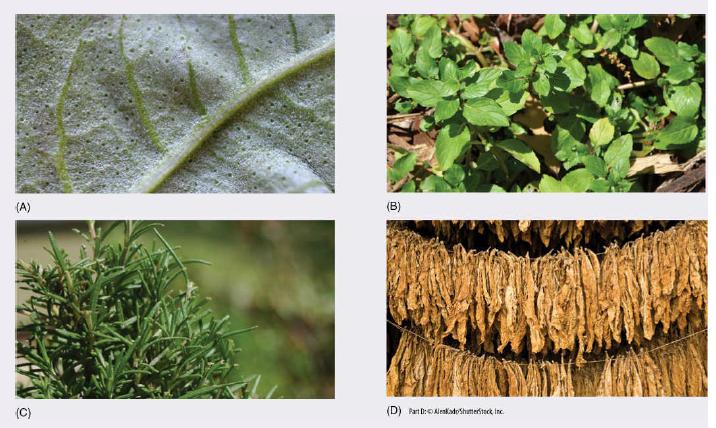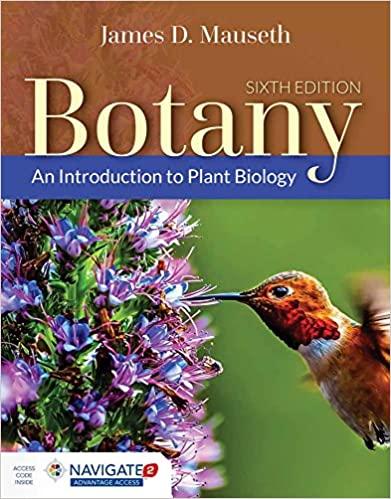Box 6-1 Plants and People: Leaves, Food, and Death, describes several ways that leaves affect animals. What
Question:
Box 6-1 “Plants and People: Leaves, Food, and Death,” describes several ways that leaves affect animals. What is the name of the toxic chemical in leaves of poison hemlock and death camas? In leaves of tobacco? Can this poison be absorbed by the mucous membranes? Can it be passed across the placenta to an unborn baby? This chemical causes cancer of which parts of our bodies?
BOX 6-1 Leaves, Food, and Death
Leaves impact our lives every day. Examples that come to mind readily are leafy foods such as artichokes (Cynara scolymus), cabbage (Brassica oleracea variety capitata), celery (petioles; Apium graveolens), lettuce (Lactuca sativa), onions (Allium cepa), and spinach (Spinacia oleracea). Also important are numerous herbs and spices: basil (Ocimum basilicum), bay leaves (Laurus nobilis), marjoram (Origanum majorana), oregano (Origanum vulgare), parsley (Petroselinum crispum), sage (Salvia officinalis), tarragon (Artemisia dracunculus), thyme (Thymus vulgaris), and the flavorings mint (several species of Mentha), spearmint (Mentha spicata), and peppermint (Mentha piperita) (FIGURE B6-1A-C). The flavors and pungency of these are due to chemicals located within the leaves themselves or in trichomes of the leaf epidermis. Most of these chemicals probably serve as antiherbivore defensive compounds, causing animals other than humans to avoid the plants. Many classes of antiherbivore chemicals have evolved, ranging from only mildly effective ones, such as these flavors, to others that are much more powerful, such as alkaloids, many of which are toxic in small amounts and kill quickly. The alkaloids in poison hemlock and death camas are particularly effective.
An alkaloid of the leaves of one plant in particular is of interest to us -It is quite lethal but acts only slowly: nicotine in the leaves of tobacco (Nicotiana tabacum) (FIGURE B6-1D). If tobacco leaves are eaten, they cause vomiting, diarrhea, and even death caused by respiratory failure; however, most tobacco leaves are smoked, of course. Americans smoked an all-time high of 4,345 cigarettes per capita in 1963. Since then, consumption has declined for white males but recently has increased for other groups. Tobacco leaves contain between 0.6% and 9.0% nicotine, and an ordinary filter cigarette has 20 to 30 mg of the alkaloid, approximately 10% of which is absorbed by the lungs. Nicotine dissolves readily into our mucous membranes and passes quickly into our blood stream. Because it is transferred across the placenta, women who smoke during pregnancy may give birth to babies addicted to nicotine. Blood-borne nicotine also affects the heart, causing coronary problems: People who smoke a pack or more a day are over three times more likely than nonsmokers to die of heart disease. After nicotine is taken into the cells of the mouth and lungs of a smoker, it can cause cancer-of the lungs especially, but also of the throat, larynx, and mouth. If detected early enough, nicotine-induced lung cancer can be combated with surgery and chemotherapy, but after the cancer has spread to the lymph system, the prognosis is not good. Lung cancer causes more than 400,000 deaths per year in the United States.

FIGURE B6-1
(A) Basil (the dots are glands that provide its flavor).
(B) Spearmint.
(C) Rosemary.
(D) Tobacco.
Step by Step Answer:





